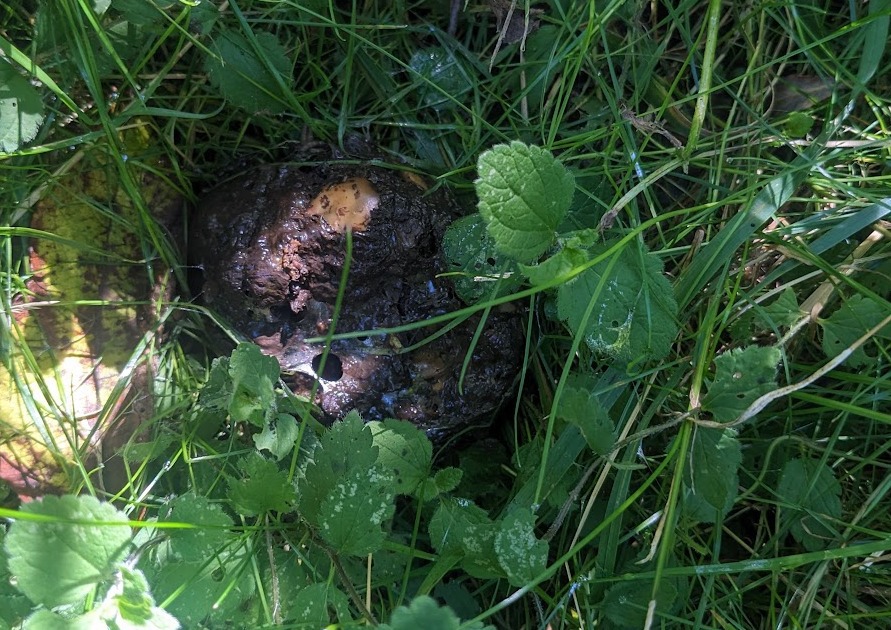On a recent bike trip through the Carpathian mountains we had a night time encounter with a large animal, which we never saw. But I recorded some (probably a little scarce) evidence the next day.
Exact location of the incident
Description of the incident
We were sitting on a field close to the tree line a large hill (or little mountain). The sun had just set and we had just eaten noodles and pesto for dinner. When we suddenly heard a large animal approaching from within the woods (a few thick branches cracking and rustling). My partner asked me what that could be, I responded: boar (since it was the most likely and I wanted to prevent any panic). We started to clap really loud to scare it away. It started to grunt pretty loud and seemingly increased it's paste toward us (which could also just be my panic influenced perception). I panicked and put my 4000lm tactical flashlight into strobe mode towards the noises. The animal slowed down and slowly retreated.
The noises where more continues than I'm used to from boars and there definitely was no squeaking quality to them (which was what I was desperately trying to here in that moment). I'd think that boar sounds are more discrete and distinct than bear sounds and I think they where, but of course my perception was also under the influence of a lot of fear and of what I wanted and did not want to hear so I'm not 100% sure.
In that moment, judging from the sound we came to the conclusion that it had to be a bear and just left everything as it was: tent standing in the woods, food in a not-bear-proof bag which had not been hung into a tree yet. We wanted to ask the people living in one of the three houses down the hill whether we could set up camp in their garden. But since their gates where locked and there was no bell at the garden gate, we gave up and just got a room a few kilometers down hill and did not return to the camp until the next morning. The bag of food and all of our camp was untouched so either animal had either been scared far away or wasn't curious or hungry.
These are the pictures I took in the morning when packing up the camp. The ground was pretty steep so the tracks are all quite smudgy. The mud was also pretty hard (we did not leave any tracks in it when walking in our biking sneakers). I think only the part of the hoofs or claws on which the most weight was resting has left any tracks. Sadly I wasn't smart enough to put anything for size comparison next to them. I also could have picked apart the parcel too see more of what it had eaten (the thing on top of the parcel looks like part of a mushroom). And of course what I saw could be from a completely unrelated animal. Since it was hard to say how far from us and into the trees the thing actually was.
Tracks
Maps of Animal Populations
Boar:

Bear:





